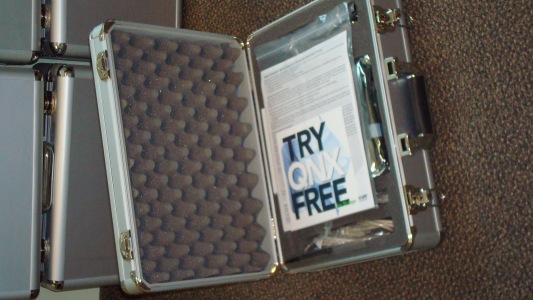(by Linda Campbell)
On June 4, Intel announced its intention to acquire Wind River Systems (WRS) and on July 17, they announced the successful completion of the transaction. It was no surprise to anyone that WRS was up for sale; rumours have abounded for years about possible acquirers. And in hindsight, the fact that Intel is their suitor can be rationalized as well, as inconvenient as it is for some in the industry.
This transaction represents a significant shift for the embedded industry as silicon vendors and OS providers redefine and realign their primary partnership strategies. Phones have been ringing and emails flying as buz dev and alliance managers scramble to react, reaching out to their networks to gain insight, perspective and any relevant gossip.
In our case, some of the most surprised were our working level contacts at Intel, who were also reaching out trying to assuage some of the concern that their ECA software partners are expressing. And in talking to other silicon vendors, it seems that WRS alliance managers have been in the same boat. The mantra being, “This doesn’t change anything. We can still be friends. ” (Where have you heard this before? Oh right, it was high school, breaking up for the first time – you either used it or received it…)
Most of the rationalization I’ve heard has centred on speculation that the ECG organization at Intel is for the most part, innocent of direct involvement. This theory is based on one of two supporting notions: (1) that this is a play for the handset space and that it’s all about WRS’s expertise on Android and Linux or (2) that this is all about Intel’s corporate Linux strategy and keeping Microsoft at bay.
Initially I took some comfort in these rumours because they let me believe that a partner of more than a decade didn’t buy our largest competitor on purpose. “It was an accident”, I told myself. Now it’s almost eight weeks later and I’m over my initial shock and looking at the situation more pragmatically. ECG’s level of involvement in the transaction is irrelevant. The reality is that Intel has spent a significant amount of cash on software that competes directly with our own. As rational business people, they will make the most of this investment.
So how does this shake out for the rest of us? Only time will tell. We’ll all have to wait and see whether Intel can maintain alliances with OS competitors and whether they can stomach investing (indirectly through a subsidiary) in competitive silicon support. However, there are some of the obvious winners that arise directly from this transaction:
- WRS shareholders, particularly anyone with lots of low cost options
- Any customer who uses Vxworks on Intel silicon
- Any customer who uses WRS’s Linux on Intel silicon
- QNX and other vendors who offer alternative solutions for WRS customers who want to migrate away from a captive software supplier
- Any OS company, realtime or Linux, who wants to establish a price for their company (2.5 times revenue is a great deal in these tough economic times)
At QNX, while we’re celebrating the removal of a competitor and the opportunity created, we are slightly concerned about the possible distraction of Intel as they work through their coopetition strategy. (Kind of like juggling multiple girlfriends with a wife.) But the good news is that Intel says they still want to be friends. 🙂
With that, I leave you with a little Todd Rundgren… and a link to the official Intel press release.
http://www.intel.com/pressroom/archive/releases/20090717corp.htm?iid=pr1_releasepri_20099717r
http://www.intel.com/pressroom/archive/releases/20090604corp.htm



 Posted by tertiarymatters
Posted by tertiarymatters  The i.mx35 is targeted at consumer, automotive and industrial applications. The combination of the i.mx35 and the QNX HMI suite are a perfect solution for companies building everything from infotainment systems to home appliances to building automation and security systems to ticketing and POS kiosks to digital signage and even netbooks.
The i.mx35 is targeted at consumer, automotive and industrial applications. The combination of the i.mx35 and the QNX HMI suite are a perfect solution for companies building everything from infotainment systems to home appliances to building automation and security systems to ticketing and POS kiosks to digital signage and even netbooks. 
